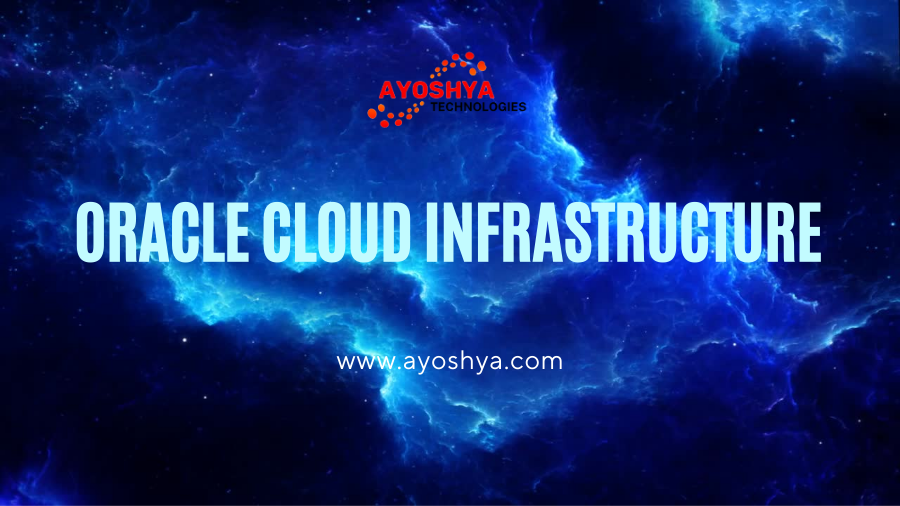Decoding the Power of Oracle Cloud Infrastructure: Elevating Digital Horizons
Welcome to the realm of Oracle Cloud Infrastructure (OCI), a pinnacle of cloud solutions reshaping the digital landscape. In this exploration, we delve into the genesis, components, industry applications, and the future of OCI.
1. Introduction
Oracle Cloud Infrastructure is more than a cloud service; it’s a dynamic ecosystem designed to empower businesses with scalability, security, and cutting-edge solutions. This article is your gateway to understanding the intricacies and advantages of OCI.
2. The Genesis of Oracle Cloud Infrastructure
Born out of the necessity for a robust cloud infrastructure, OCI emerged as Oracle’s answer to the evolving demands of the digital era. Its inception marked a paradigm shift, emphasizing performance, security, and scalability.
3. Key Components of Oracle Cloud Infrastructure
3.1. Fortifying Foundations: Compute Services
At the core of OCI lies its compute services, offering unparalleled performance and flexibility. From standard instances to GPU-powered solutions, OCI caters to diverse computing needs.
3.2. Networking Marvels: Oracle Cloud Networking
OCI’s networking capabilities are a masterpiece, providing businesses with secure, low-latency connections. With features like Virtual Cloud Networks (VCN) and FastConnect, networking reaches new heights.
3.3. Shielding Data: Oracle Cloud Security Measures
Security is paramount, and OCI excels in this arena. From identity and access management to advanced encryption, OCI ensures that your data remains an impenetrable fortress.
3.4. Elevating Storage Solutions
Storage is no longer a challenge with OCI. Its diverse storage solutions, including Object Storage and Block Volumes, provide the flexibility and scalability required for modern businesses.
4. Oracle Cloud Infrastructure in Action
4.1. Success Stories: Businesses Thriving on OCI
Real-world success stories showcase how businesses across industries leverage OCI to achieve unprecedented efficiency, scalability, and cost-effectiveness.
4.2. A Glimpse into Industries Transformed
Explore how OCI is transforming industries, from healthcare and finance to manufacturing and beyond, providing tailored solutions to diverse business landscapes.
5. Unveiling the Oracle Cloud vs. Competitors
5.1. Oracle Cloud vs. AWS: A Comparative Analysis
A head-to-head comparison between OCI and AWS unveils the strengths and weaknesses of each, aiding businesses in making informed cloud infrastructure decisions.
5.2. Oracle Cloud vs. Azure: Navigating the Cloud War
In the battle of cloud giants, OCI and Azure compete for supremacy. Delve into their offerings to discern which aligns better with your business requirements.
5.3. GCP vs. OCI: Decoding the Cloud Dialect
Google Cloud Platform (GCP) and OCI cater to similar needs but with distinct approaches. This section dissects their differences to guide your cloud adoption strategy.
6. Oracle Cloud Infrastructure: The Future Unveiled
As technology advances, OCI is poised to integrate emerging technologies like AI, machine learning, and blockchain, positioning itself as a future-ready solution for businesses.
7. Advantages and Challenges of Oracle Cloud Infrastructure
7.1. Advantages Galore: What Sets OCI Apart
OCI’s advantages, including superior performance, comprehensive security, and cost-effectiveness, make it a standout choice for businesses.
7.2. Overcoming Challenges: A User’s Guide
Navigating the challenges of adopting OCI involves strategic planning, ongoing training, and a willingness to adapt to updates and improvements.
8. Implementing Oracle Cloud Infrastructure: Best Practices
8.1. Crafting a Blueprint: Strategic Planning
A strategic approach to implementing OCI involves understanding business needs, defining objectives, and creating a realistic roadmap for seamless integration.
8.2. Skill Empowerment: Training and Development
Ensure the success of OCI implementation by empowering your team with the necessary skills through training programs and continuous development.
8.3. Adapting to Change: Embracing Updates
OCI evolves continuously, and staying current with updates ensures that your business benefits from new features, enhanced security, and improved performance.
9. Oracle Cloud Infrastructure and Security
A dedicated section focusing on OCI’s robust security features, emphasizing its commitment to safeguarding data in the cloud.
10. Conclusion
In conclusion, Oracle Cloud Infrastructure isn’t just a cloud service; it’s a strategic asset for businesses aiming to thrive in the digital age. From compute services to networking marvels and industry transformations, OCI stands tall as a beacon of innovation.
FAQs
1. How does Oracle Cloud Infrastructure ensure data security?
OCI employs advanced encryption, comprehensive access controls, and robust identity management to ensure the security of data.
2. What sets OCI apart from its competitors?
OCI distinguishes itself through superior performance, comprehensive security measures, and a future-ready approach integrating emerging technologies.
3. Can small businesses benefit from Oracle Cloud Infrastructure?
Absolutely. OCI offers solutions scalable to businesses of all sizes, ensuring that even small enterprises can leverage its advantages.
4. What industries benefit most from OCI?
OCI caters to diverse industries, including healthcare, finance, manufacturing, and more, providing tailored solutions to unique business requirements.
5. What is the future outlook for Oracle Cloud Infrastructure?
OCI is expected to integrate emerging technologies like AI and machine learning, positioning itself as a robust, future-ready solution for businesses.
Read More:
Oracle Consulting: the Power of Digital Transformation



